How to Fix Soreness in the Knees From Playing Basketball

The sudden stops and jumps in a game of basketball are rough on your shock absorbers -- the knees. Soreness in the knee joints may be a normal side effect of enjoying a great game or getting in a good workout, but watch for the warning signs of a more serious injury before brushing off sore knees as a minor annoyance.
If the soreness is accompanied by immobility, swelling or an inability to bear weight, go see your orthopedic. Anterior cruciate ligament tears, or ACL tears, and other cartilage tears are common in basketball players and may require surgery, treatment, over-the-counter anti-inflammatory medications, or physical therapy to get back to 100%.
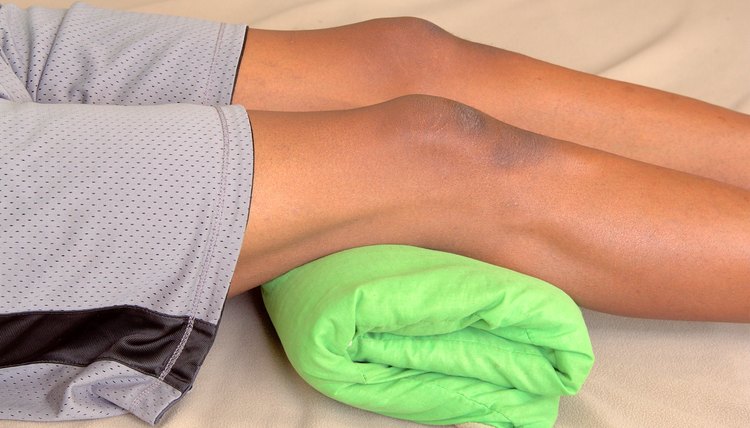
Ray Robert Green/Demand Media
Icing
The most important thing you can do when you feel knee soreness or knee pain is to get off of them.
Sit or lie down comfortably, placing a soft pillow underneath your knees to prevent hyperextension beyond your usual range of motion. You will want to stay off the knees as much as possible, so avoid strenuous activities like playing basketball or performing extreme strengthening exercises for a couple days.
Place ice or a bag of frozen vegetables on each knee over the location of the pain. One common area where sports injuries tend to occur is around the patellar tendon, which is located in the front of the knee and connects the bottom of the kneecap to the tibia bone.
Leave the ice in place for up to 20 minutes. Repeat as necessary for pain relief, giving your knees 15-minute breaks without ice between applications.
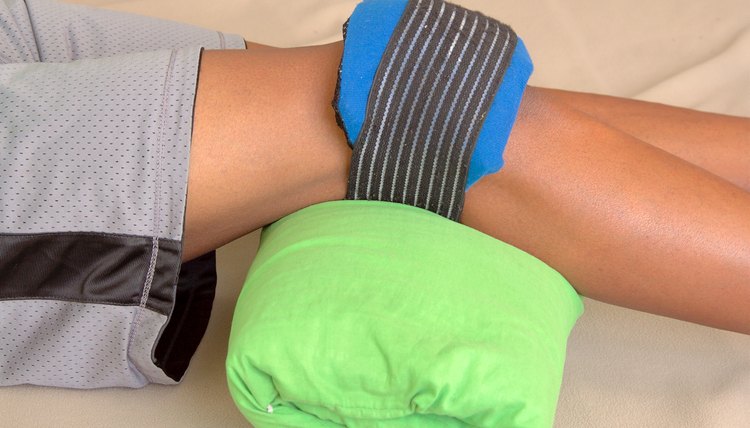
Ray Robert Green/Demand Media
Compression and Stretching
Wrap the knees with elastic compression wraps for comfort. Start the wrap under the knee, around the upper shinbone, and work the wrap up the leg towards your quads in a diagonal direction. Wrapping too tight or with a horizontal wrap can impair healing blood flow to the knee.
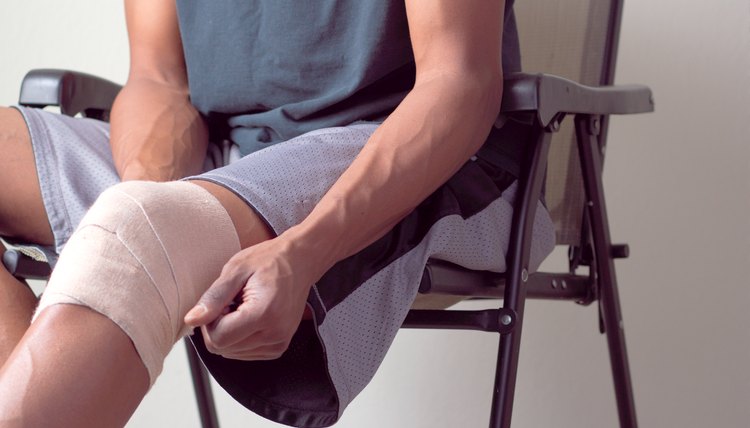
Ray Robert Green/Demand Media
Stretch the muscles supporting the knees once the soreness abates, and daily thereafter. Tight muscles may lead to future injury. Warm up with a gentle five-minute jog.

Ray Robert Green/Demand Media
Stretch the quadriceps -- the large thigh muscles -- by lifting your right ankle toward your buttocks with your right hand. Support your weight by holding on to a stationary object, such as a countertop, with your left hand. Hold the stretch for 30 seconds. Repeat this on the other side.
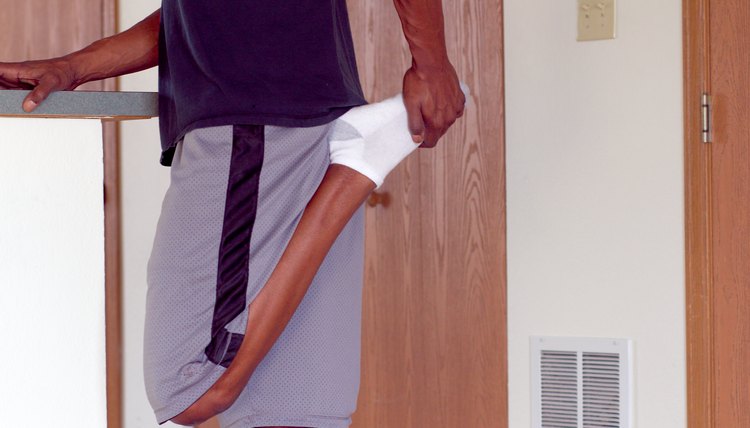
Ray Robert Green/Demand Media
Many young athletes often run into problems because of their failure to stretch the hamstrings. Here is a good hamstring stretch.
- Sit on the floor with your legs in front of you
- Keeping your back as straight as possible, gently lean over your legs and reach for your toes with your fingertips
- Stop when you feel a pulling in the backs of your legs around your meniscus and hamstrings and hold this position for 30 seconds.
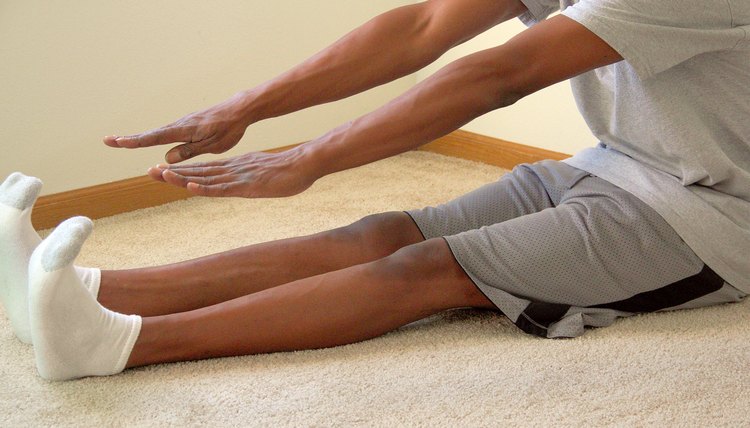
Ray Robert Green/Demand Media
Strengthen the quadriceps to decrease the chances of future overuse injuries like sprains and jumper’s knee.
- Stand against a wall with your back flat
- Step your feet about 18 inches away from the wall, keeping your buttocks in contact with the wall
- Gently lower your buttocks toward the floor, as if you were sitting down, and hold this for a two count
Repeat this as tolerated.
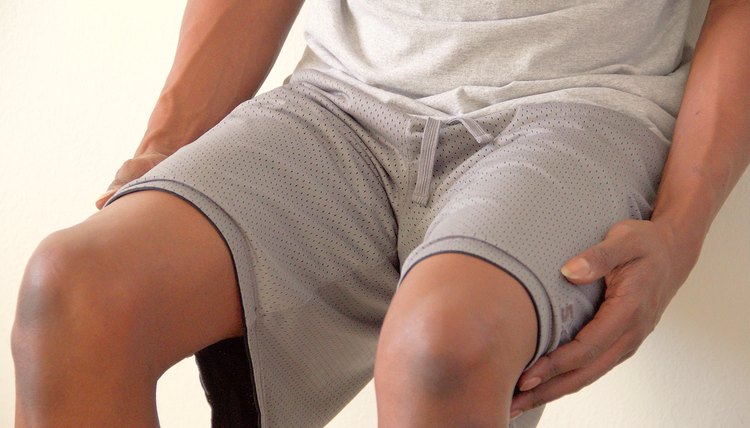
Ray Robert Green/Demand Media
Things You'll Need
- Pillow
- Ice or a bag of frozen vegetables
- Elastic compression wrap
- Crutches (optional)
Increase the intensity of your strength training by holding on to light dumbbells during your squat. Warm up and cool down for at least five minutes before and after a game to help prevent knee injuries.
If your soreness persists or elevates into pain, contact your doctor.
Writer Bio
As a bachelor's-prepared registered nurse with more than 15 years of diversified experience, Juliet Wilkinson innerves our health-conscious population through expert articles. She is a motivated professional who believes that preventive care is the first step towards health and well-being.
